
You are in :
Mountains & Wadis
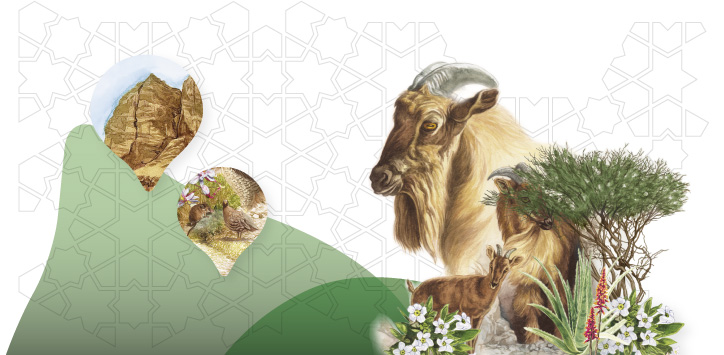
Mountains & Wadis
The chapter on the physical geography of the Emirate describes how a combination of processes including uplift, erosion and weathering have resulted in an array of landforms, including mountains and rocky uplands, desert valleys known as saihs or wadis and alluvial fans extending from the uplands to form distinctive stony plains. Although limited in area compared to the extensive dune fields and sand sheets, this landscape is more varied. Consequently, plants and animals have exploited a number of unique habitats and specialised niches. While life remains largely constrained by the availability of water, the impact of changing altitude is evident across this diverse and captivating landscape. Located south of the city of Al Ain, Jebel Hafit is one of the most important conservation areas in the region. Biologically diverse, and harbouring archaeological sites dating back thousands of years, it is a favoured destination for visitors. More than 120 species of plants have been recorded in the area and it is the only known refuge for the endangered Arabian Tahr (Hemitragus jayakari) in the Emirate.
Medicinal Plants
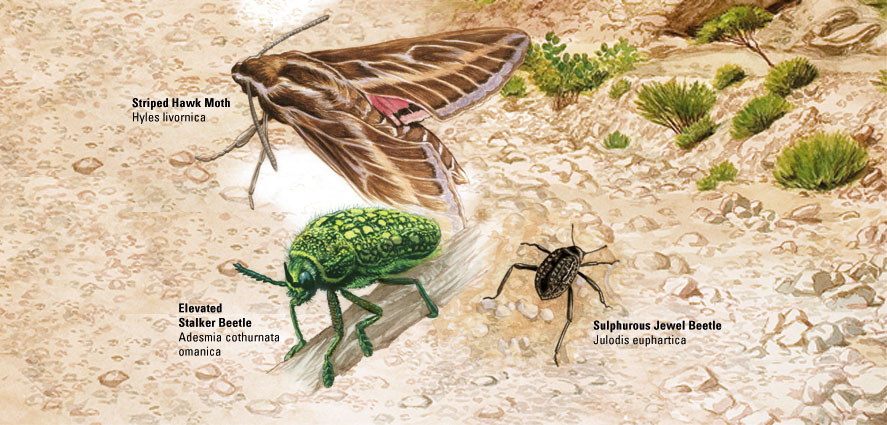
Nearly 25% of Abu Dhabi's native plants have medicinal and traditional uses. Seeds of Senna (Cassia italica) were used as a laxative and for stomach pain while seeds of Desert Squash (Citrullus colocynthis) were highly valued as a treatment for diabetes. In small quantities, the poisonous plant Harmal (Rhazya stricta) treated gastric illnesses. The paste of heated powdered leaves of Dhafra (Tephrosia apollinea), mixed with water and salt, alleviates the pain of wounds and fractures, and poultices of Turnsole (Heliotropium bacciferum) leaves have been found to effectively treat blisters.
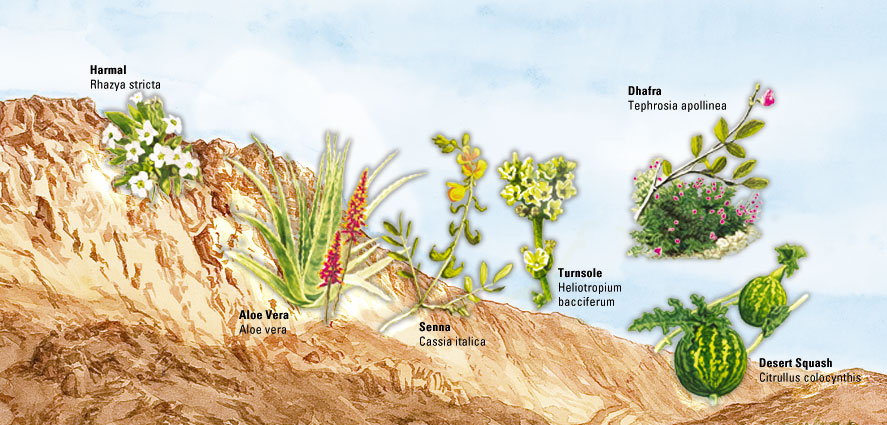
Blanford's Fox
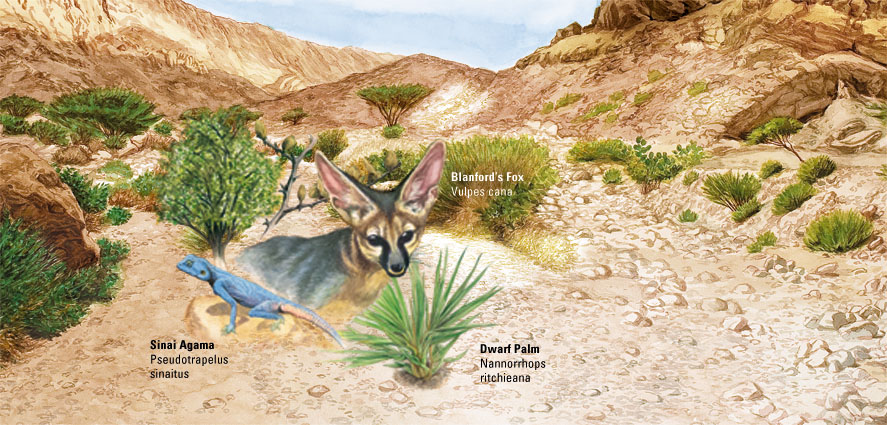
Blanford's Fox (Vulpes cana) is highly adapted to rocky mountainous habitats. By occupying uplands, the fox has managed to avoid competition with larger foxes such as the red and Rüppell's (sand) fox, which inhabit the open deserts. Blanford's foxes are very agile and can jump large distances. They are opportunistic and feed on lizards, insects, rodents and birds.
Christ's Thorn
Christ's Thorn (Ziziphus spina-christi), like the acacia, originated from Africa and is one of the largest native trees in the UAE, growing to a height of 10 m. As the name suggests, the crown of thorns placed on Christ's head during crucifixion is thought to have come from this species.
Sinai Agama
The Sinai Agama (Pseudotrapelus sinaitus) is a striking blue-coloured lizard and a typical ‘ambush' predator. It can be seen patiently waiting atop a bush or rock to surprise and devour a passing insect. When excited or aroused, the male's upper body turns bright blue as a warning.
Dwarf Palms
The Dwarf Palm (Nannorrhops ritchieana) is one of two species of native palm found in the UAE. Its heavily branched trunk forms a dense shrubby clump with fan-shaped leaves covered by woolly hairs. The creamy white flowers usually appear between March and June; fruits are reddish, edible and locally known as mish. Historically, the fibrous leaves were used to make roofs for houses and fishing nets. Baskets and mats are also made from Dwarf Palm fibre.
The Arabian Leopard
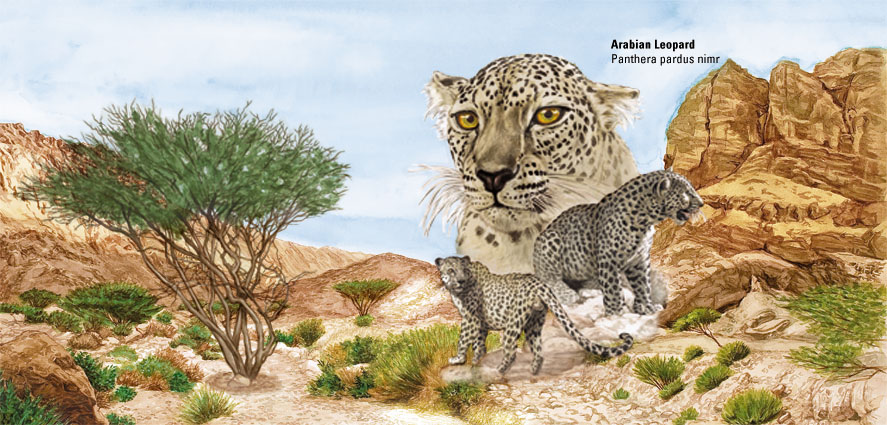
The largest cat in Arabia, the Arabian Leopard (Panthera pardus nimr) has a body covered with markings of yellow-grey rosettes with black spots. They prey on gazelles, hares, goats and smaller animals. Solitary, nocturnal and territorial animals, they require an extensive home range. In the UAE, the loss and fragmentation of habitat in addition to the decline in prey species has led to a dramatic decrease in numbers. Furthermore, leopards were hunted to protect domestic livestock and this combination of pressures has driven them to extinction in the Emirate and perhaps even the UAE as a whole.
Arabian Tahr-Mountain Goat
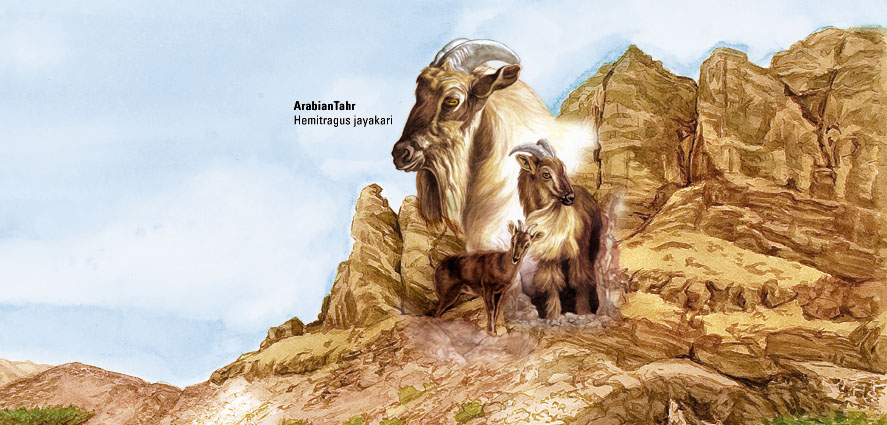
The Arabian Tahr (Arabitragus jayakari) is a wild goat endemic to the UAE and Oman, but habitat loss has diminished its population to less than 2,000. Tahr move easily over rocky, steep mountainous slopes. Unlike many desert animals, Tahr require a permanent and reliable water source. Its young are born throughout the year after a 5-month gestation period.
Moringa Tree
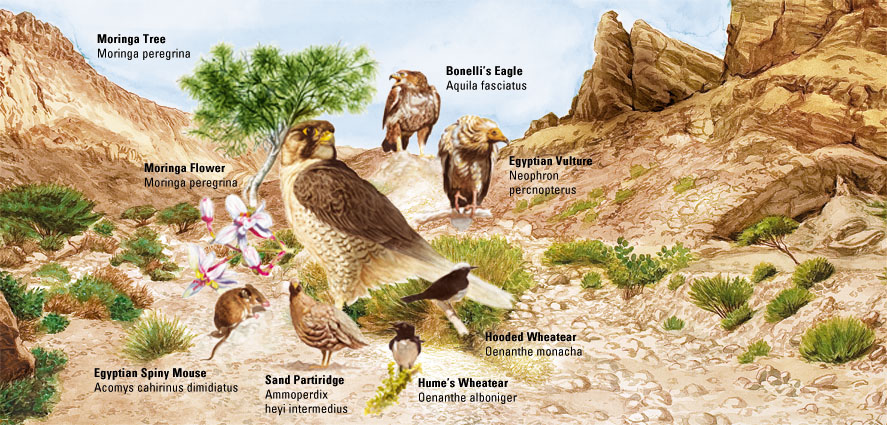
The Moringa (Moringa peregrina) reaches a height of about 10 m and has thin, pendulous branches that are usually leafless. The flowers are whitish-pink and the fruit resembles a pointed capsule. Oil from the moringa pods has been used to treat infantile paralysis, stomach ailments and leprosy. The wood is ideal for traditional home construction since it is strong and resistant to termites.
Caves
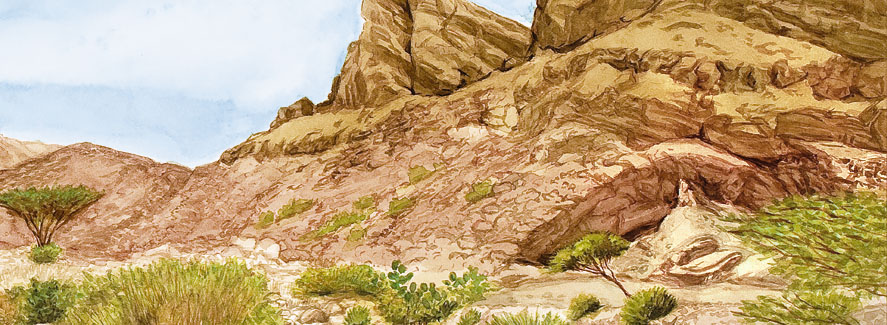
The limestone caves of Jebel Hafit offer a fascinating glimpse of life that is entirely adapted to a world without light. The passages and ‘ballrooms,' stretching deep under-ground, are home to a variety of permanent residents including troglobites (species adapted to lightless conditions) and visitors such as bats, which roost in the caves at night but venture out in the evening to hunt insects.
Acacia
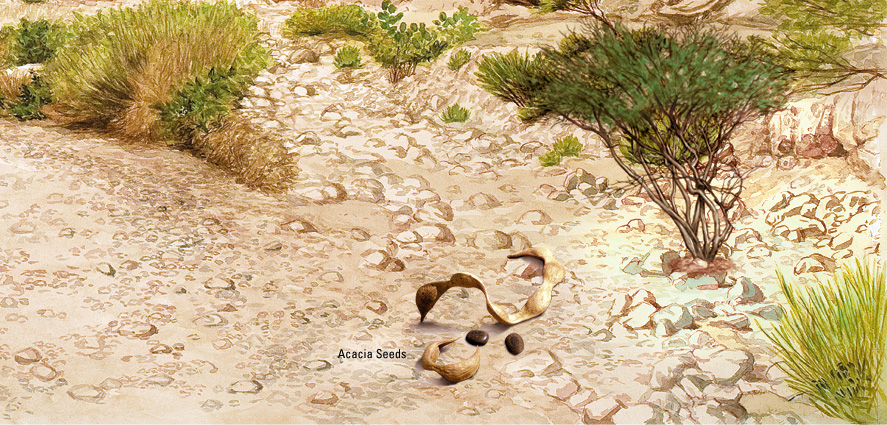
The Acacia Tree provides shade and is highly valued for its pods, which are rich in nutritious protein. Three species (Acacia ehrenbergiana, A. nilotica, A. tortilis) are indigenous to Abu Dhabi but A. tortilis is the most common and ecologically important one. Its scientific name ‘tortilis' (meaning ‘twisted') is derived from its spirally twisted pods. It is found on gravel plains and uplands, flowering from April to June. The tap root runs deep, allowing extraction of otherwise inaccessible groundwater. Acacia seeds have a hard coating that requires damage or scarring before germination can occur. The seeds are eaten by camels or goats, passing through the intestinal tract and germinating wherever they are deposited. This process not only transports the seeds great distances but also kills bruchid beetles, which increases the seeds' chances of germination.

















